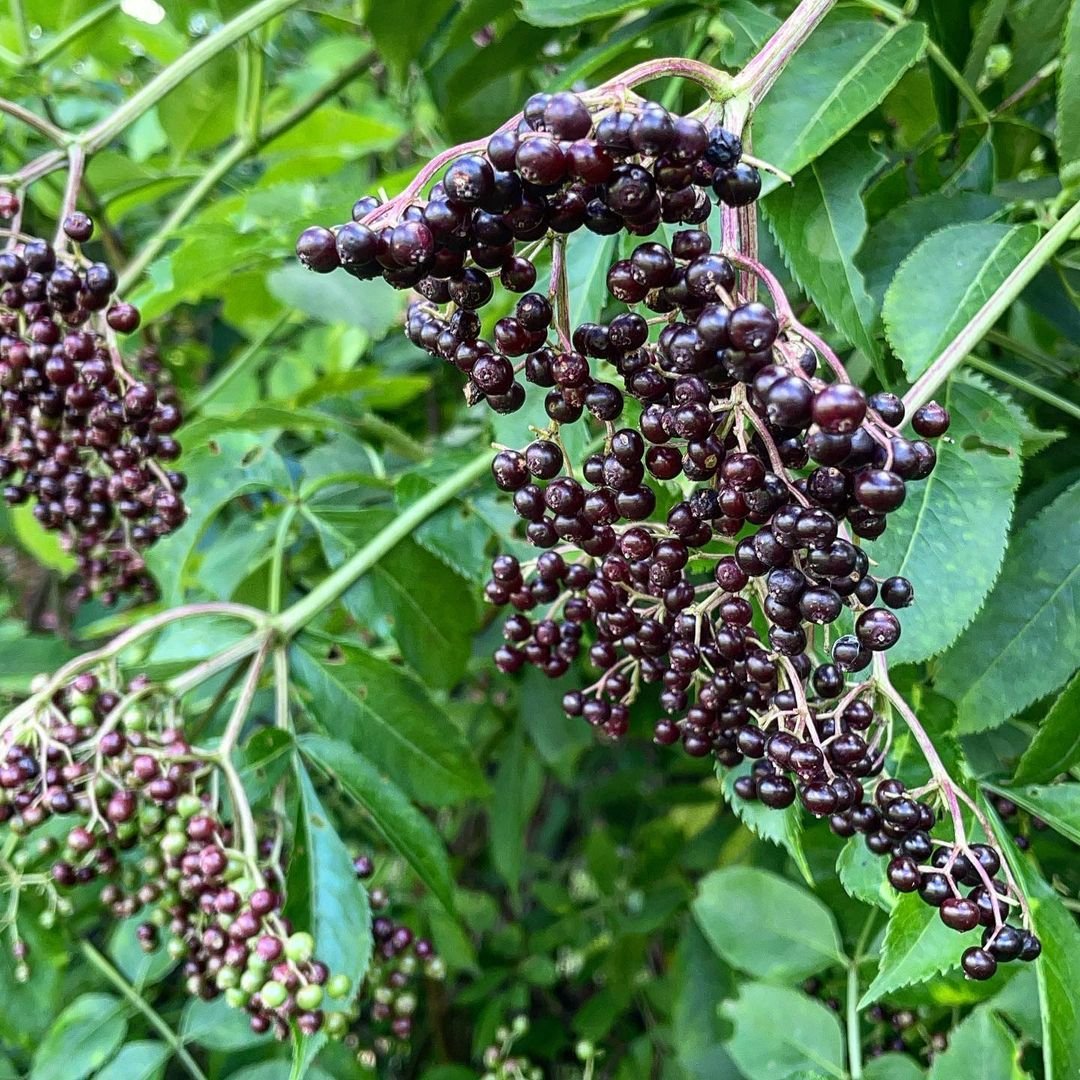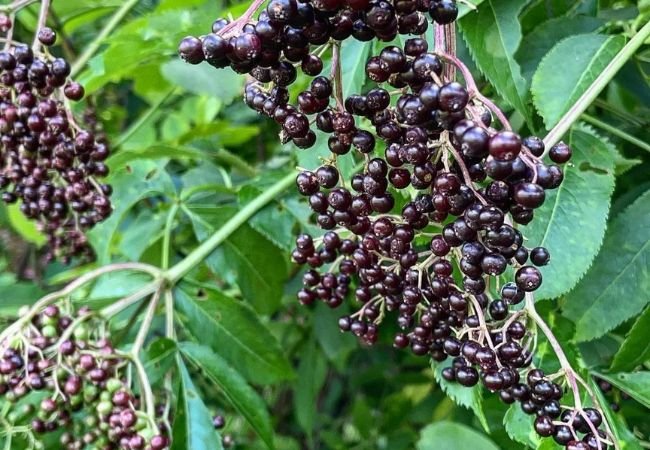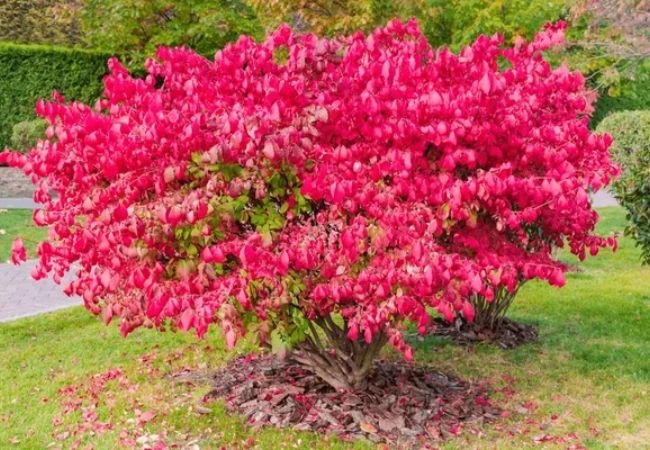Learn how to grow and care for elderberry plants. Discover tips for harvesting and using this versatile berry in your kitchen, along with its health benefits.
Elderberry plants are a true powerhouse in the world of berries. Not only are they easy to grow and care for, but the berries themselves offer a host of health benefits and culinary uses. Whether you’re looking to add some nutritional value to your diet or create delicious jams, syrups, and more, elderberries are a fantastic choice.
In this comprehensive guide, we’ll cover everything you need to know about growing, harvesting, and using elderberry plants. Get ready to unlock the full potential of this amazing berry!
Here is a chart with detailed information on Elderberry plants:
| Category | Information |
|---|---|
| Botanical Name | Sambucus nigra, Sambucus canadensis |
| Common Name | Elderberry |
| Plant Type | Deciduous Shrub |
| Hardiness Zone | 3-9 |
| Sun Exposure | Full Sun to Partial Shade |
| Soil Type | Well-drained, Moist, Loamy |
| Watering | Regular, Keep Soil Moist |
| Growth Habit | Multi-stemmed, Spreading |
| Height/Spread | 6-12 feet tall / 6-12 feet wide |
| Special Features | Edible Berries (When Cooked), Attracts Pollinators, High in Antioxidants, Used in Herbal Medicine, Tolerates Wet Soil |
What are Elderberries?

Elderberries come from the Sambucus plant, a genus of flowering plants in the family Adoxaceae. There are several species of elderberry, but the most commonly cultivated variety is the European elder (Sambucus nigra).
Elderberry plants are deciduous shrubs or small trees that can grow up to 30 feet tall. They feature compound leaves, flat-topped clusters of small white flowers, and dark purple-black berries.
The Health Benefits of Elderberries
Elderberries are packed with an impressive array of vitamins, minerals, and antioxidants.
Some of the key health benefits include:
- High in Vitamin C – Elderberries contain up to 3 times more vitamin C than oranges, providing a powerful immune boost.
- Antioxidant-Rich – The berries are loaded with anthocyanins and other antioxidants that can help fight free radicals and inflammation.
- May Reduce Inflammation – Studies suggest that elderberries have anti-inflammatory properties that could help ease conditions like arthritis.
- Potential Flu-Fighting Properties – Some research indicates that elderberry extracts may help reduce the duration and severity of flu symptoms.
- Supports Healthy Skin – The antioxidants in elderberries may help protect the skin from environmental stressors.
How to Grow Elderberry Plants
Elderberry plants are relatively easy to grow and can thrive in a variety of climates.
Here are some tips for successful cultivation:
Choosing a Planting Site
- Elderberries prefer full sun to partial shade, with at least 6 hours of direct sunlight per day.
- The soil should be moist but well-drained. Amend heavy clay soils with compost or other organic matter.
- Space plants 6-10 feet apart to allow for their mature size.
Planting and Care
- Plant elderberry cuttings or bare-root plants in early spring or fall.
- Water regularly, especially during the first year, to keep the soil consistently moist.
- Mulch around the base of the plants to retain moisture and suppress weeds.
- Prune annually to remove dead or damaged canes and encourage new growth.
Propagating Elderberries
- Elderberry plants can be propagated through softwood cuttings, hardwood cuttings, or division of the roots.
- Take cuttings in spring or early summer and root them in a well-draining potting mix.
- Divide older plants in late winter or early spring for new starts.
Harvesting and Storing Elderberries
Elderberries typically ripen in late summer to early fall, depending on your climate.
Here’s how to harvest and store them:
Harvesting
- Wait until the berries are fully ripe, indicated by their deep purple-black color.
- Gently strip the clusters of berries off the stems, being careful not to crush them.
- Avoid harvesting berries that are still red or green, as they can be toxic.
Storing
- Spread the freshly harvested berries out on a baking sheet and place them in the freezer for a few hours.
- Once frozen, transfer the berries to an airtight container or freezer bag. They’ll keep for up to 1 year.
- You can also dry elderberries by dehydrating them at a low temperature.
Culinary Uses for Elderberries
Elderberries are incredibly versatile in the kitchen.
Here are some delicious ways to use them:
Jams and Preserves
- Elderberry jam or preserves make a tasty spread for toast, scones, or crackers.
- Try this recipe for Elderberry Jam with just a few simple ingredients.
Syrups and Cordials
- Elderberry syrup is a popular natural cold and flu remedy, but it also makes a lovely addition to cocktails and mocktails.
- Elderberry cordial is a classic English liqueur that can be sipped on its own or used in mixed drinks.
Pies, Cobblers, and Baked Goods
- Elderberries lend a beautiful purple hue and sweet-tart flavor to pies, cobblers, muffins, and other baked treats.
- Try an Elderberry Crumble Pie or Elderberry Scones.
Teas and Tonics
- Dried elderberries can be steeped in hot water to make a soothing, antioxidant-rich tea.
- Incorporate elderberries into herbal tinctures, teas, and other wellness tonics.
Safety Considerations
While elderberries are generally safe to consume when properly prepared,
there are a few important safety notes to keep in mind:
- Unripe, green elderberries, as well as the leaves, stems, and roots of the plant, can be toxic and should never be eaten.
- Cooking the berries thoroughly (by boiling, baking, or drying) helps to break down the cyanogenic glycosides that can cause digestive upset.
- Pregnant or nursing women, young children, and those with certain health conditions should consult a healthcare provider before consuming elderberries.
Elderberry plants are a true gem for the home gardener and home cook. With their eye-catching flowers, abundant berries, and impressive health benefits, there’s a lot to love about these versatile shrubs.
By following the tips in this guide, you can successfully grow, harvest, and use elderberries to add a nutritional and delicious boost to your life. Whether you’re whipping up a batch of immune-supporting syrup or baking up a mouthwatering pie, the possibilities are endless.
So why not give elderberry cultivation a try? This hardy, low-maintenance plant is sure to reward you with a bountiful harvest and a wealth of culinary and wellness applications. Get ready to discover the power of the elderberry!
For more gardening tips and
plant care guides, visit usagardenhub.com.





